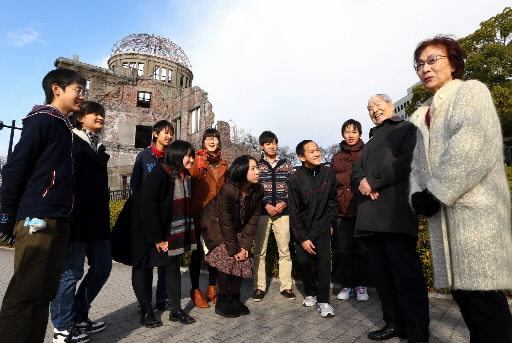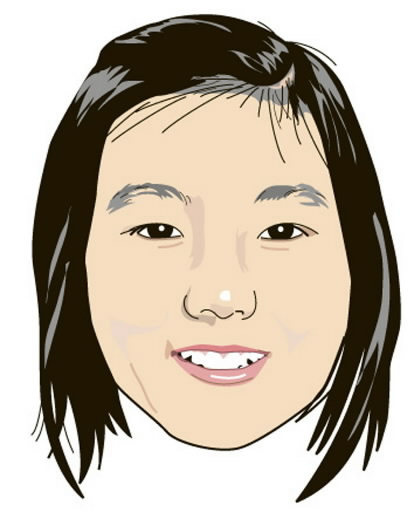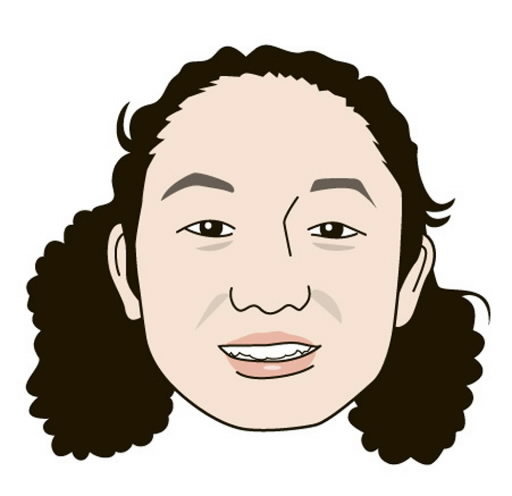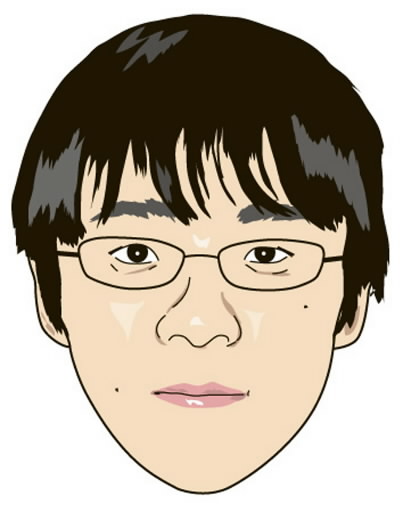Hiroshima Peace Media Center marks fifth anniversary: Conveying Hiroshima’s message to the next generation
Jan. 15, 2013
by Tomomitsu Miyazaki, Rie Nii and Sakiko Masuda, Staff Writers
January 1 marked the fifth anniversary of the Chugoku Shimbun’s establishment of its Hiroshima Peace Media Center (HPMC). Via its website, the center conveys to the world the call for “No More Hiroshimas,” which is based on the city’s experience as the victim of an atomic bombing. The center has also made an effort to pass on the A-bombing experience to the next generation.
Student reporters pass on survivors’ memories
Along with conveying its message to the world, the HPMC has worked to pass on the A-bombing experience to the next generation. This effort to pass on the spirit of “No More Hiroshimas” to young people is typified by the diverse activities of the center’s “junior writers,” who are junior high and high school students.
As the future leaders of Hiroshima, the junior writers have undertaken the “Passing on Memories” program. Twice a month they interview atomic bomb survivors about their experiences. They not only listen to them describe what happened at the time of the bombing but also take time to talk about their lives and feelings during and after the war. Some of the survivors bring up other subjects such as their grandchildren or past romances. Through these interviews the junior writers learn not only about the horrors of the atomic bombing but also about the strength of the survivors, which has helped them come through hardships for more than 67 years.
Nearly every week the young writers also prepare articles for “Junior Writers Reporting,” which introduces organizations devoted to peace and international cooperation.
Through their reporting, some of the junior writers have come to feel they would like to take action themselves and have participated in international exchange and peace-related activities. Some have served as members of the executive committee for a peace forum that is planned and run by high school students and on the boards of non-profit organizations involved in international cooperation. Some have traveled to countries such as India, the United States and Canada to talk about the inhumanity of the atomic bomb.
“The opportunity to meet real people engaged in terrific activities and to learn about actual events has had a tremendous impact on these young people,” said Tomoko Watanabe, 59, executive director of ANT-Hiroshima, a local non-profit organization, and a former member of the city’s board of education. Steven Leeper, 65, chairperson of the Hiroshima Peace Culture Foundation, said, “I hope they work for the future while thinking about what the world will be like 20 or 30 years from now.”
Horizons broadened by reporting
I have been a junior writer for almost five years. The thing that made the biggest impression on me was an interview I did with Tomiko Kawano, who was a friend of Sadako Sasaki. She said tearfully, “I promised to go visit her every day, but I broke my promise.”
In the summer of 2011 I went to the city of Nagaoka in Niigata Prefecture, where a pumpkin bomb (non-nuclear replication of the Fat Man bomb dropped on Nagasaki) was dropped. I participated in a Peace Forum, and discussed peace with local junior high school students. In some sessions there were heated exchanges of opinion.
Until I undertook these activities, I knew nothing about peace or war. Spending hours on interviews and rewriting my articles is hard, but it’s really fun. Every time I report on something, my horizons are broadened. I’d like to tell other people about what I’ve learned and work with them to build a peaceful world. (Mako Sakamoto, first-year high school student)
Proposal for children’s summit implemented
I became a junior writer in the spring of 2008. My first interview was with Yohei Kono, then speaker of the House of Representatives. I proposed holding a “children’s summit” where children could discuss their feelings about peace and other issues and convey them to adults.
It was implemented when the APEC Junior Conference was held in Hiroshima in February 2010. I was really happy that a suggestion by a young person was accepted by an adult.
As a result of my activities, I began to focus my attention on junior high and high school students overseas and got involved in international exchanges.
From now on I’d like to not only engage in exchanges but also carry out international cooperation activities, such as enabling disadvantaged children go to school. (Miyu Sakata, second-year high school student)
Grandfather’s memorable account
I’ve interviewed a lot of people: atomic bomb survivors, doctors, the mayor, the governor. But my interview with my late grandfather was particularly memorable. He lived with us, but until then all he had said about the A-bombing was that he was exposed to radiation when he came to Hiroshima several days afterwards. Hearing about his experiences for the first time, everything was new to me. It’s strange to think that I am the person I am now because of the war and my grandfather’s experiences.
Reporting on the Japan Campaign to Ban Land Mines organization was also memorable. Civilians, especially children, may be indiscriminately harmed by land mines and unexploded bombs even after hostilities or wars have ended.
If nuclear weapons proliferate it will be very difficult to eliminate them. I would like to make use of the knowledge and experience I’ve gained as a junior writer and contribute to the effort to eliminate nuclear weapons. (Masataka Tanaka, second-year high school student)
(Originally published on January 1, 2013)
January 1 marked the fifth anniversary of the Chugoku Shimbun’s establishment of its Hiroshima Peace Media Center (HPMC). Via its website, the center conveys to the world the call for “No More Hiroshimas,” which is based on the city’s experience as the victim of an atomic bombing. The center has also made an effort to pass on the A-bombing experience to the next generation.
Student reporters pass on survivors’ memories
Along with conveying its message to the world, the HPMC has worked to pass on the A-bombing experience to the next generation. This effort to pass on the spirit of “No More Hiroshimas” to young people is typified by the diverse activities of the center’s “junior writers,” who are junior high and high school students.
As the future leaders of Hiroshima, the junior writers have undertaken the “Passing on Memories” program. Twice a month they interview atomic bomb survivors about their experiences. They not only listen to them describe what happened at the time of the bombing but also take time to talk about their lives and feelings during and after the war. Some of the survivors bring up other subjects such as their grandchildren or past romances. Through these interviews the junior writers learn not only about the horrors of the atomic bombing but also about the strength of the survivors, which has helped them come through hardships for more than 67 years.
Nearly every week the young writers also prepare articles for “Junior Writers Reporting,” which introduces organizations devoted to peace and international cooperation.
Through their reporting, some of the junior writers have come to feel they would like to take action themselves and have participated in international exchange and peace-related activities. Some have served as members of the executive committee for a peace forum that is planned and run by high school students and on the boards of non-profit organizations involved in international cooperation. Some have traveled to countries such as India, the United States and Canada to talk about the inhumanity of the atomic bomb.
“The opportunity to meet real people engaged in terrific activities and to learn about actual events has had a tremendous impact on these young people,” said Tomoko Watanabe, 59, executive director of ANT-Hiroshima, a local non-profit organization, and a former member of the city’s board of education. Steven Leeper, 65, chairperson of the Hiroshima Peace Culture Foundation, said, “I hope they work for the future while thinking about what the world will be like 20 or 30 years from now.”
Horizons broadened by reporting
I have been a junior writer for almost five years. The thing that made the biggest impression on me was an interview I did with Tomiko Kawano, who was a friend of Sadako Sasaki. She said tearfully, “I promised to go visit her every day, but I broke my promise.”
In the summer of 2011 I went to the city of Nagaoka in Niigata Prefecture, where a pumpkin bomb (non-nuclear replication of the Fat Man bomb dropped on Nagasaki) was dropped. I participated in a Peace Forum, and discussed peace with local junior high school students. In some sessions there were heated exchanges of opinion.
Until I undertook these activities, I knew nothing about peace or war. Spending hours on interviews and rewriting my articles is hard, but it’s really fun. Every time I report on something, my horizons are broadened. I’d like to tell other people about what I’ve learned and work with them to build a peaceful world. (Mako Sakamoto, first-year high school student)
Proposal for children’s summit implemented
I became a junior writer in the spring of 2008. My first interview was with Yohei Kono, then speaker of the House of Representatives. I proposed holding a “children’s summit” where children could discuss their feelings about peace and other issues and convey them to adults.
It was implemented when the APEC Junior Conference was held in Hiroshima in February 2010. I was really happy that a suggestion by a young person was accepted by an adult.
As a result of my activities, I began to focus my attention on junior high and high school students overseas and got involved in international exchanges.
From now on I’d like to not only engage in exchanges but also carry out international cooperation activities, such as enabling disadvantaged children go to school. (Miyu Sakata, second-year high school student)
Grandfather’s memorable account
I’ve interviewed a lot of people: atomic bomb survivors, doctors, the mayor, the governor. But my interview with my late grandfather was particularly memorable. He lived with us, but until then all he had said about the A-bombing was that he was exposed to radiation when he came to Hiroshima several days afterwards. Hearing about his experiences for the first time, everything was new to me. It’s strange to think that I am the person I am now because of the war and my grandfather’s experiences.
Reporting on the Japan Campaign to Ban Land Mines organization was also memorable. Civilians, especially children, may be indiscriminately harmed by land mines and unexploded bombs even after hostilities or wars have ended.
If nuclear weapons proliferate it will be very difficult to eliminate them. I would like to make use of the knowledge and experience I’ve gained as a junior writer and contribute to the effort to eliminate nuclear weapons. (Masataka Tanaka, second-year high school student)
(Originally published on January 1, 2013)











